Top 10 Key Highlights of Economic Survey 2017 for UPSC Aspirants

Union Finance Minister Arun Jaitley tabled the Economic Survey 2017 in the Parliament budget session.This Economic survey 2017 is very relevant for all UPSC aspirants as the document explains in the most comprehensive manner about how Indian economy performed in the last financial year; its challenges and future prospects.
Here are the 10 highlights of Economic Survey 2017 relevant for UPSC aspirants:
- The Economic survey 2016-17 pegs the economy to grow in the range of 6.75% to 7.25% in the post demonetization year.
- Universal Basic Income scheme projected as an alternative to the plethora of state subsidies for poverty alleviation and social welfare. But the idea is not ready for implementation yet.
- Demonetization to affect the growth rate by 0.25% – 0.50%, but expected to have long term benefits. This can be achieved through fast, demand driven re-monetization, tax reforms including GST.
- Twin balance sheet syndrome of leveraged companies and bad loan encumbered banks has continued.
- Demographic dividend to peak within the next 5 years and need to stress more on developing apparel and leather industries.
- Economic survey 2017 also explains how ‘Fiscal Activism’ embraced by advanced economies (AEs) is not relevant for India.
- Swachh Bharat Mission to promote a broader fundamental right to privacy for women.
- Growth of farm sector to improve (4.1% this fiscal), industrial sector to moderate (5.2%) and services sector to continue the success story (8.9%).
- Fiscal windfall is expected from Pradhan Mantri Garib Kalyan Yojana and low oil prices, while the benefits of GST will take time to realize.
- The Economic survey also points out that the capacity of the State in delivering essential services such as health and education is weak due to low capacity, high levels of corruption, clientelism, rules and red tape.
Being an UPSC aspirant, you must be aware of the economic Outlook of the country and the challenges faced by the country in various sectors of the Economy. As an annual document, Economic Survey 2016-17 will help you to revise the happenings in the Economic sector of our country round the year.
Download: Full Economic Survey 2017
Also Read:
8 Quick Facts about Economic Survey 2016 – 17
Economic Survey 2016 – 17 : How to read it ?
Chapter wise analysis of Economic Survey 2016 – 17 for UPSC Aspirants
Chapter wise analysis of Economic Survey 2016 – 17 is given below. It provides you the key highlights of all the 14 Chapter to make your UPSC Civil Services Preparation easier. We welcome your valuable suggestions & comments.
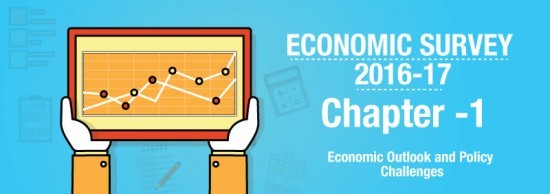
Chapter 01- Economic Outlook and Policy Challenges – Highlights of Economic Survey 2016-17
Economic Outlook and Policy Challenges Briefly on the chapter: The Economic Survey of 2014-15 spoke about the sweet spot for the Indian economy that could launch India onto a trajectory of sustained growth of 8-10 percent. The “Sweet Spot” mentioned in 2014-15 aroused out of the following factors: A Strong Political Mandate the Modi government […]
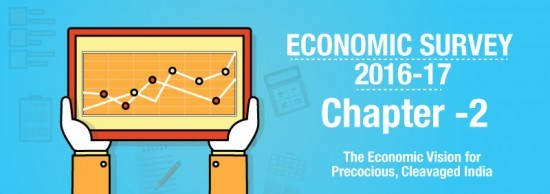
Chapter 02 – The Economic Vision for Precocious, Cleavaged India – Highlights of Economic Survey 2016-17
The Chapter 02 of Economic Survey 2016-17 briefly discusses the growth performance of the nation over decades, focuses up on serious challenges that impede further rapid progress and concludes by providing a possible explanation to these challenges. Important points to remember in chapter 2 of economic survey 2016-17 for Civil Services Examination Economic Survey 2016-17 […]
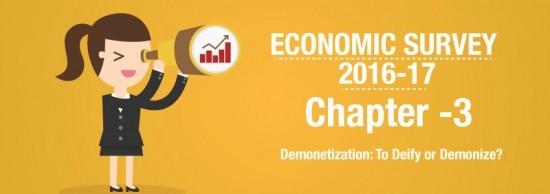
Chapter 03 – Demonetization: To Deify or Demonize?- Highlights of Economic Survey 2016-17
Demonetization: To Deify or Demonize? Union finance minister Arun Jaitley tabled the Economic Survey 2016-17 in Parliament during the first day of the budget session. Here are the major highlights from the Chapter 3 of Economic Survey 2016-17. The most anticipated chapter for many in the Economic Survey had to be regarding Demonetization. Chapter 3 mentions […]
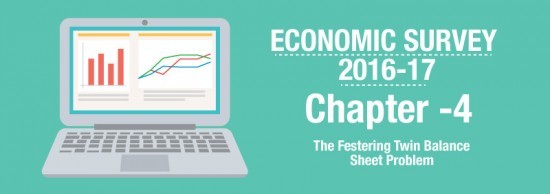
Chapter 04 – The Festering Twin Balance Sheet Problem – Highlights of Economic Survey 2016-17
The Festering Twin Balance Sheet Problem Union finance minister Arun Jaitley tabled the Economic Survey 2016-17 in Parliament during the first day of the budget session. Here are the major highlights from the Chapter 4 of Economic Survey 2016-17. Chapter 4 of the Economic survey 2016-17 deals with the banking system, its vulnerabilities, ability to adapt […]
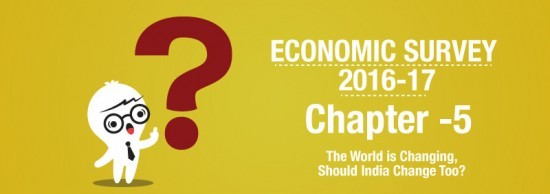
Chapter-05 – Fiscal Framework: The World is Changing, Should India Change Too? – Highlights
Fiscal Framework: The World is Changing, Should India Change Too? The Economic Survey 2016-17 is tabled in the parliament to mark the beginning of budget session. Here are the major highlights from the Chapter 5 of Economic Survey 2016-17. Economic survey analyses the Fiscal Responsibility & Budgetary Management Act (FRBMA) in the light of increasing […]
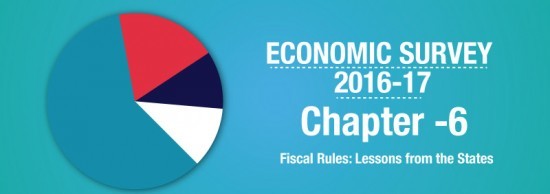
Chapter 06 – Fiscal Rules: Lessons from the States – Highlights of Economic Survey 2016-17
Fiscal Rules: Lessons from the States The Economic Survey 2016-17 is tabled in the parliament to mark the beginning of budget session. Here are the major highlights from the Chapter 6 of Economic Survey 2016-17. The Economic Survey 2016-17 talks about fiscal lessons from the states. Fiscal challenges are mounting because of the Pay Commission […]
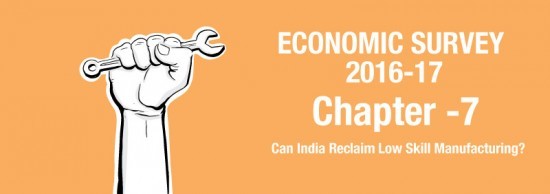
Chapter 07 – Clothes and Shoes : Can India Reclaim Low Skill Manufacturing? – Highlights
Clothes and Shoes: Can India Reclaim Low Skill Manufacturing? Union finance minister Arun Jaitley tabled the Economic Survey 2016-17 in Parliament during the first day of the budget session. Here are the major highlights from the Chapter 7 of Economic Survey 2016-17. The Economic Survey 2016-17 notes that creating jobs is India’s central challenge. India needs […]
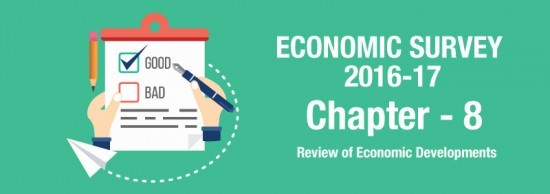
Chapter 08 – Review of Economic Developments- Highlights of Economic Survey 2016-17
Chapter 8 of the Economic Survey 2016-17 deals with a comprehensive review of the Indian economy. This chapter provides huge data related to various macro economic variables. It also gives an insight into government’s commitment in various sectors such as education, health, climate change, social development and so on. Thus, some areas of this chapter […]
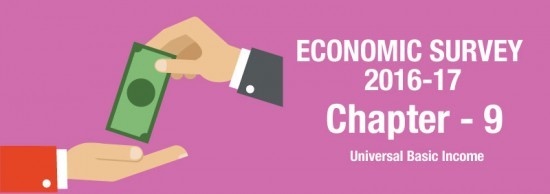
Chapter 09 : Universal Basic Income – Highlights of Economic Survey 2016-17
Union finance minister Arun Jaitley tabled the Economic Survey 2016-17 in Parliament during the first day of the budget session. Here are the major highlights from Chapter 9 of Economic Survey 2016-17. What is universal basic income? Universal Basic Income is a form of social security paid to individuals, not households, and it is paid to […]
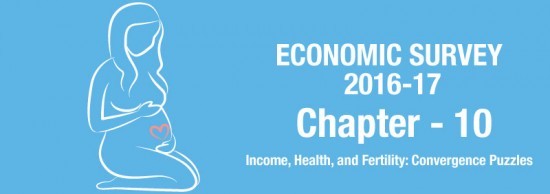
Chapter 10 – Income, Health, and Fertility: Convergence Puzzles – Highlights
Union finance minister Arun Jaitley tabled the Economic Survey 2016-17 in Parliament during the first day of the budget session. Here are the major highlights from Chapter 10 of Economic Survey 2016-17. Despite rapid overall growth, there is striking evidence of divergence, or widening gaps in income and consumption across the Indian states, in sharp […]
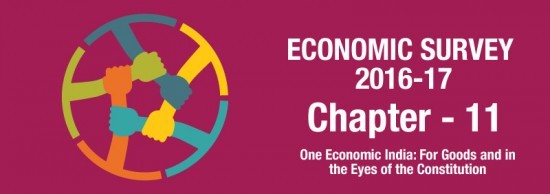
Chapter 11 – One Economic India – Highlights of Economic Survey 2016-17
This chapter of the Economic Survey 2016-17 is an attempt to assess the extent to which India can bring the idea of “ONE ECONOMIC INDIA“, similar in tune to the affirmed political “idea of India,”. The assessment is based primarily on data based and juridical analysis of Indian economy and laws and thus, definitely makes […]
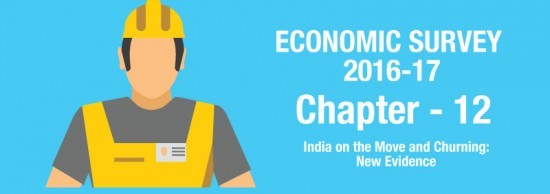
Chapter 12 – India on the Move and Churning – Highlights of Economic Survey 2016-17
Chapter 12 of the Economic Survey 2016-17 talks about labour migration and the prevailing economic conditions in the country. The Economic Survey conducts an extensive study to arrive upon various conclusions. This chapter is not that important for UPSC Prelims, but topics such as migration, urbanization, female labour force etc can be a part of […]
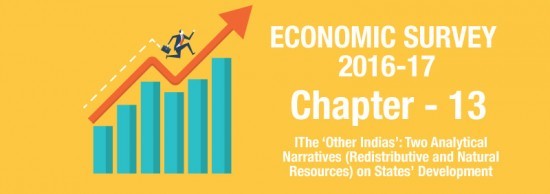
Chapter 13 – The ‘Other Indias’ – Highlights of Economic Survey 2016-17
Chapter 13 of the Economic Survey 2016-17 focuses upon various development models found in India and how far states have progressed since Independence. The survey here notes that the government has been less than efficient in providing redistributive justice and promoting social welfare. Economic Survey 2016-17 identifies three successful models of development found in Peninsular […]
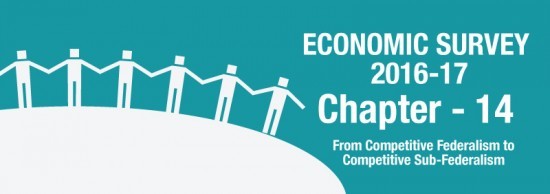
Chapter 14 – From Competitive Federalism to Competitive Sub-Federalism – Highlights of Economic Survey 2016-17
Chapter 14 of the Economic Survey 2016-17 focuses on attempt to make cities entrusted with responsibilities, empowered with resources, and encumbered by accountability so as to make them effective vehicles for competitive federalism and, indeed, to unleash competitive sub federalism. What’s Competitive sub federalism according to economic survey 2016-17? The term ‘competitive sub – federalism’ […]

 Login
Login